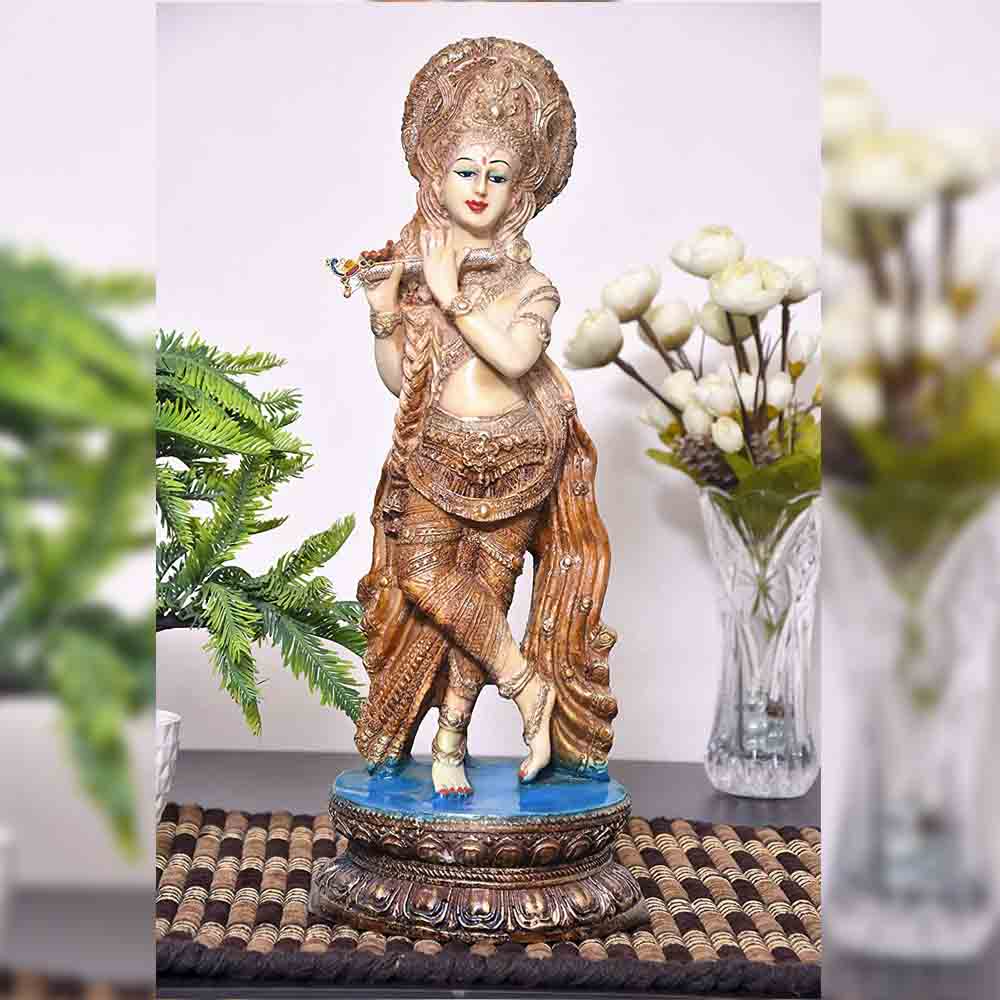Are you curious about the significance behind the various poses of Lord Krishna in murti form? In this comprehensive guide, we will delve into the meanings and symbolism behind different Krishna Bhagwan murti poses. From standing to sitting postures, each pose carries a unique message and conveys a specific aspect of Lord Krishna's divine nature. Let's embark on this enlightening journey to unravel the mysteries behind these buy radha krishna idol sacred representations.
Introduction to Lord Krishna
Before we explore the meaning behind various murti poses of Lord Krishna, let's briefly introduce this beloved deity in Hindu mythology. Known as the eighth avatar of Lord Vishnu, Krishna is revered as a supreme god in his own right. He is depicted as a playful cowherd, a mischievous child, a compassionate friend, and a wise philosopher. His life story, teachings, and divine deeds are chronicled in the sacred texts of the Bhagavad Gita, Mahabharata, and Srimad Bhagavatam.
The Standing Pose (Tribhanga)
The standing pose of Lord Krishna, known as Tribhanga, is one of the most common murti poses seen in temples and homes. In this posture, Krishna stands with three bends in his body - at the neck, waist, and knee. The Tribhanga pose symbolizes grace, beauty, and elegance. It represents Krishna's playful and charming nature, captivating devotees with his enchanting form.
The Flute Playing Pose (Veena Vadana)
One of the most iconic images of Lord Krishna is him playing the flute under a Kadamba tree in Vrindavan. This pose is known as Veena Vadana or Muralidhar. The flute symbolizes divine music that enchants all beings and connects them to the universal harmony. It signifies Krishna's ability to attract souls with his melodious tunes and lead them on the path of spiritual enlightenment.
The Lifting Govardhan Hill Pose (Govardhan Parvat Uthapana)
In this powerful pose, Lord Krishna is depicted lifting Govardhan Hill on his little finger to protect the residents of Vrindavan from Indra's wrath. This pose symbolizes Krishna's immense strength, compassion for his devotees, and his ability to perform miraculous feats. It teaches us to have faith in God's protection during times of adversity and trust in his divine intervention.
The Dancing Pose (Nritya)
Lord Krishna is also known for his enchanting dance performances known as Raas Leela with Radha and Gopis in Vrindavan. His dancing pose represents joy, ecstasy, and blissful union with the divine. It signifies harmony between body, mind, and soul through graceful movements that express love and devotion towards God.
FAQs about Different Krishna Bhagwan Murti Poses
1. What is the significance of Lord Krishna's peacock feather?
The peacock feather worn by Lord Krishna symbolizes beauty,…
buy radha krishna idol2. Why does Lord Krishna have blue skin?
The blue complexion of Lord…


3….
Conclusion
In conclusion,…
By exploring…